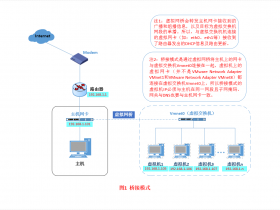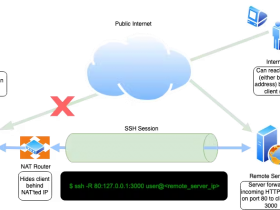- A+
sed用法用法
基础sed命令
sed命令的基本语法
sed OPTIONS… [SCRIPT] [INPUTFILE…]
常用的选项:
-n,–quiet: 不输出模式空间中的内容
-i: 直接编辑原文件,默认不对原文件进行操作
-e: 可以使用多个命令(脚本)进行操作
-f /path/from/sed_script: 从指定的文本中读取处理脚本
-r: 使用扩展正则表达式
sed命令选项
替换标记
g:表示行内全面替换
w:表示把行写入一个文件
x:表示互换模式空间的文本和保持空间的文本
y:表示把一个字符翻译为另外的字符(不用于正则表达式)
单行模式空间
a :新增, a 的后面可以接字串,而这些字串会在新的一行出现(目前的下一行)
c :取代, c 的后面可以接字串,这些字串可以取代 n1,n2 之间的行!
d :删除,因为是删除,所以 d 后面通常不接任何东西;
i :插入, i 的后面可以接字串,而这些字串会在新的一行出现(目前的上一行);
p :打印,即将某个选择的数据印出。通常 p 会与参数 sed -n 一起运行
s :取代,通常这个 s 的动作可以搭配正则表达式!例如 1,20s/old/new/g
n:读取下一个输入行, 用下一个命令处理新的行
y:把一个或多个字符替换成另一个字符
a的用法
[root@localhost ~]# vim xbz [root@localhost ~]# cat xbz a b c d c b a [root@localhost ~]# sed '3abbxxxx' xbz //在第三行下面(第四行)进行新增 a b c d c bbxxxx b a [root@localhost ~]# sed '/c/abbxxxx' xbz //在匹配的参数(c)下一行进行添加 a b c bbxxxx d c bbxxxx b a c的用法
[root@localhost ~]# cat xbz a b c d c b a [root@localhost ~]# sed '2cxxb' xbz //取代第二行 a b c xxb c b a [root@localhost ~]# cat xbz a b c d c b a [root@localhost ~]# sed '/d/caa' xbz //在匹配的参数(d)进行取代 a b c aa c b a d的用法
root@localhost ~]# cat xbz a b c d c b a [root@localhost ~]# sed '1d' xbz //删除第一行 d c b a [root@localhost ~]# cat xbz a b c d c b a [root@localhost ~]# sed '/c/d' xbz //在匹配的参数(c)进行整行删除 d b a i的用法
[root@localhost ~]# cat xbz a b c d c b a [root@localhost ~]# sed '2i3838' xbz //在第二行进行插入 a b c 3838 d c b a [root@localhost ~]# cat xbz a b c d c b a [root@localhost ~]# sed '/c/i6868' xbz //在匹配的参数(c)那一行进行插入 6868 a b c d 6868 c b a p的用法
[root@localhost ~]# cat xbz a b c d c b a [root@localhost ~]# sed -n '/b/p' xbz //-n选项:只显示匹配处理的行(否则会输出所有)(也就是关闭默认的输出),只是打印带b的行 a b c b s的用法
[root@localhost ~]# cat xbz a b c d c bbb a [root@localhost ~]# sed 's/b/a/' xbz //将匹配的参数(b)每行里的第一个参数进行替换 a a c d c abb a [root@localhost ~]# cat xbz a b c d c bbb a [root@localhost ~]# sed 's/b/a/g' xbz //在上面的基础是加上g就可以全部进行替换 a a c d c aaa a n的用法
此处的n不是sed -n的n的那种用法,是n读取下一个输入行
[root@localhost ~]# cat xbz a b c d c bbb a [root@localhost ~]# sed -n '/a/n;p' xbz //匹配到的参数(a)下面的所有行 d c bbb y的用法
[root@localhost ~]# cat xbz a b c d c bbb a [root@localhost ~]# sed '3y/c/C/' xbz //将匹配到的第三行小写c改为大写C a b c d C bbb a 高阶sed命令
模式空间与保持空间
模拟空间:
当前处理输出的缓冲空间,因为sed就是一次处理一行的内容,就会把这一行的内容提取到模式空间,然后用sed命令处理这一行的内容,处理完成后输出到屏幕,接着处理下一行 的内容
保持空间:
保持空间就是sed的另一个缓冲区,此缓冲区如其名,不会自动清空内容,也不会把缓冲区的内容打印到的标准输出中
模式空间与保持空间的关系
模式空间:相当于流水线,文本行再模式空间中进行处理;
保持空间:相当于仓库,在模式空间对数据进行处理时,可以把数据临时存储到保持空间;作为模式空间的一个辅助临时缓冲区,但又是相互独立,可以进行交互,命令可以寻址模式空间但是不能寻址保持空间。可以使用高级命令h,H,g,G与模式空间进行交互。
sed命令选项
多行空间模式
N:读取匹配到的行的下一行追加至模式空间
P:打印模式空间开端至n内容,并追加到默认输出之前
D:如果模式空间包含换行符,则删除直到第一个换行符的模式空间中的文本, 并不会读取新的输入行,而使用合成的模式空间重新启动循环。如果模式空间 不包含换行符,则会像发出d命令那样启动正常的新循环
N追加下一行
[root@localhost ~]# cat xbz.txt Consult Section 3.1 in the Owner and Operator Guide for a description of the tape drives available on your system. [root@localhost ~]# sed -n '/Operator$/{N;p}' xbz.txt Consult Section 3.1 in the Owner and Operator Guide for a description of the tape drives [root@localhost ~]# sed -n '/Operator$/{N;s/Owner and OperatornGuide/installation Guide/g;p}' xbz.txt Consult Section 3.1 in the installation Guide for a description of the tape drives [root@localhost ~]# sed '/Operator$/{N;s/Owner and OperatornGuide/installation Guide/g}' xbz.txt Consult Section 3.1 in the installation Guide for a description of the tape drives available on your system. //我们假设想要将“Owner and 0perator Guide”换成“lnstallation Guide”,但是我们发现它出现在文件中的两行上,“Operator”和“Guide”被分开了。 Owner and Operator Guide 换成 installation Guide 空格用n D多行删除
[root@localhost ~]# cat test This is the header line. This is a data line. This is the last line. [root@localhost ~]# sed '/^$/{N ; /header/D}' test //删除模式空间的第一行 This is the header line. This is a data line. This is the last line. P多行打印
[root@localhost ~]# cat xxb Here are examples of the UNIX System. Where UNIX System appears, it should be the UNIX Operating System. [root@localhost ~]# sed -n '/UNIX$/p' xxb Here are examples of the UNIX System. Where UNIX System appears, it should be the UNIX [root@localhost ~]# sed -n '/UNIX$/{N;p}' xxb Here are examples of the UNIX System. Where UNIX System appears, it should be the UNIX Operating System. [root@localhost ~]# sed -n '/UNIX$/{N;/nSystem/{p}}' xxb Here are examples of the UNIX System. Where UNIX [root@localhost ~]# sed -n '/UNIX$/{N;/nSystem/{s// Operating &/g;p}}' xxb Here are examples of the UNIX Operating System. Where UNIX [root@localhost ~]# sed -n '/UNIX$/{N;/nSystem/{s// Operating &/g;P;D;p}}' xxb Here are examples of the UNIX Operating System. Where UNIX Operating 保持空间
| 命令 | 缩写 | 功能 |
|---|---|---|
| Hold | h(复制)或H (追加) 上传 | 将模式空间的内容复制或追加到保持空间 |
| Get | g或G下载 | 将保持空间的内容复制或追加到模式空间 |
| Exchange | x | 交换保持空间和模式空间的内容 |
[root@localhost ~]# cat abc 1 2 11 22 111 222 [root@localhost ~]# sed '/1/{h;d};/2/G' abc //匹配1将内容放入保持空间,删除,在将匹配2的内容追加模式空间 2 1 22 11 222 111 



